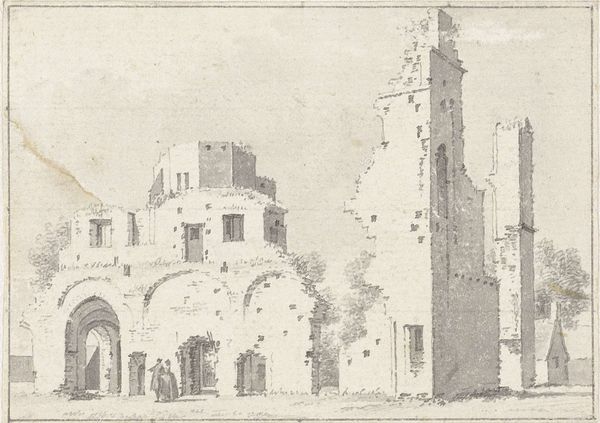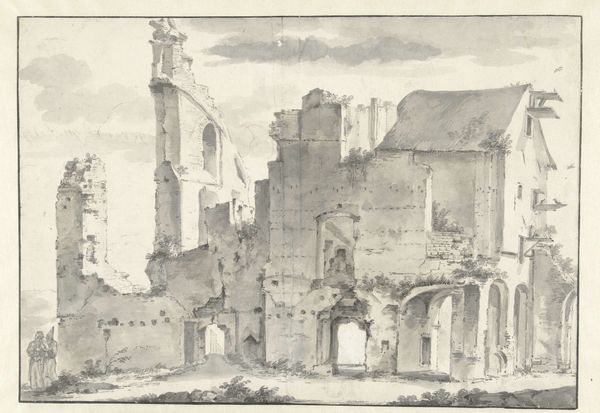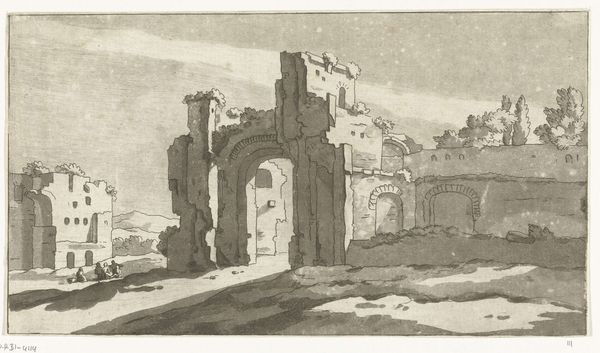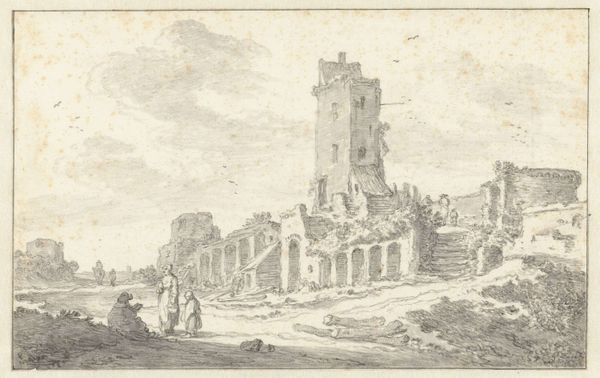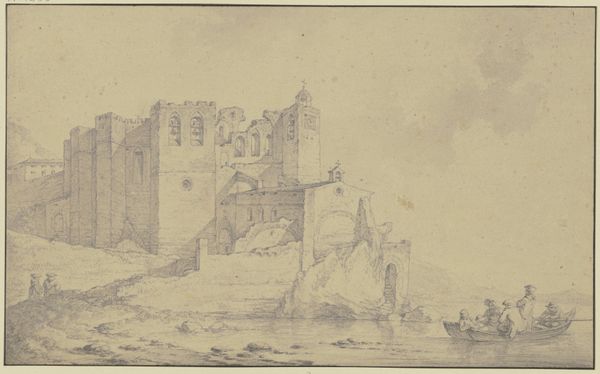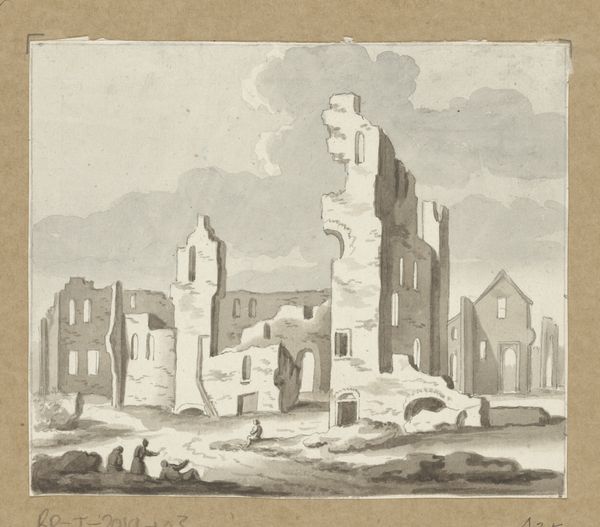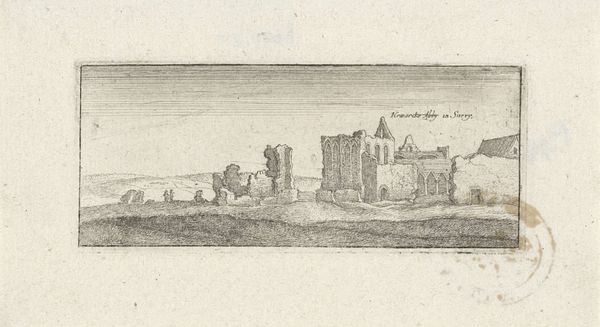
drawing, etching, pencil
#
drawing
#
etching
#
landscape
#
etching
#
pencil
#
realism
Dimensions: height 73 mm, width 102 mm
Copyright: Rijks Museum: Open Domain
Curator: Cornelis Pronk created this sensitive rendering of “De ruïne van de Abdij te Rijnsburg” or "The Ruin of the Abbey at Rijnsburg," dating roughly between 1725 and 1745. It's a meticulously rendered drawing in pencil and etching. Editor: The first thing that strikes me is the monochromatic palette; it amplifies the sense of desolation and lost grandeur. The stark composition truly commands the eye to the intricate network of lines that map out the abbey's remains. Curator: Indeed. The subject matter itself, a ruined abbey, carries centuries of cultural memory, loss, and transformation. Abbeys were central hubs of knowledge and power; seeing one in such disrepair signifies a societal shift. This could be related to iconoclasm. Editor: Pronk has employed hatching and cross-hatching to articulate the form and texture of the aged stone. The skeletal remains are stark; notice how the arches remain, reaching heavenward, which are echoed by the linear verticals that stand at differing heights in the skeletal structure. It is masterful control of line. Curator: And within those decaying walls, consider the implied symbolism. The abbey, once a refuge, now a ruin. Its physical collapse mirrors the impermanence of institutions, a theme that would certainly resonate given religious conflict in the period and the dissolution of power. Editor: From a compositional viewpoint, observe how the artist placed the structure to almost fill the field. This emphasizes its imposing scale, even in ruin. The subtle use of shading lends it dimensionality, pulling it forward and engaging us in this landscape of historical erosion. Curator: It’s quite likely that drawings like this one, meticulously documented, served not only as artistic studies, but as historical records themselves, capturing the visible effects of time and turmoil on cultural landmarks, and it allows the modern visitor to be moved by this imagery even centuries after the abbey lost its structure. Editor: Ultimately, it’s Pronk's careful manipulation of light and shadow that makes this such a captivating piece. He breathes life—or, perhaps more accurately, a very poignant kind of afterlife—into stone. Curator: Yes, the image captures not just physical decay but echoes the passage of time itself, leaving us with questions. It reminds us of the transient nature of human endeavors. Editor: Absolutely. Pronk shows us that there is beauty and profound reflection even in these fractured remains of what was once a grand religious monument.
Comments
No comments
Be the first to comment and join the conversation on the ultimate creative platform.
